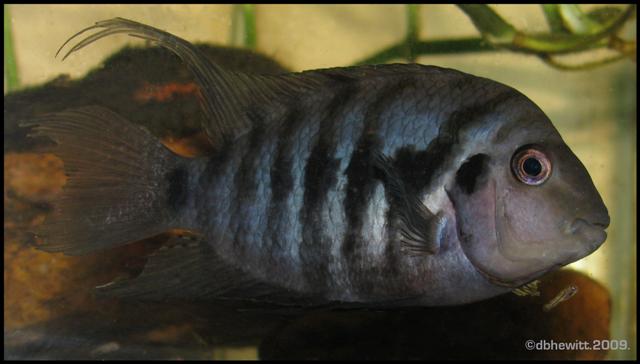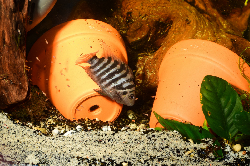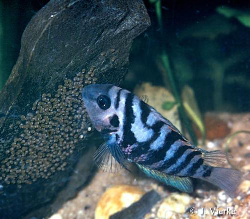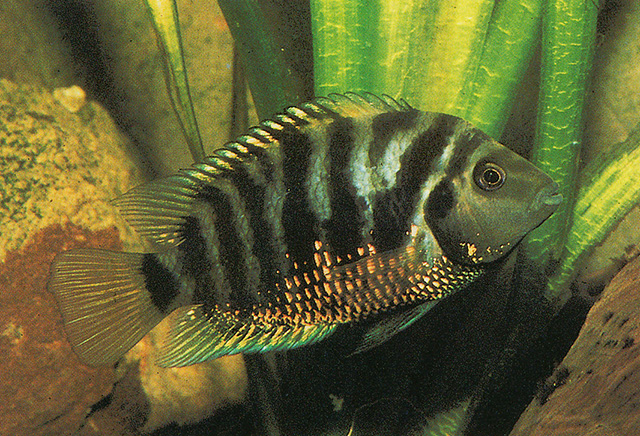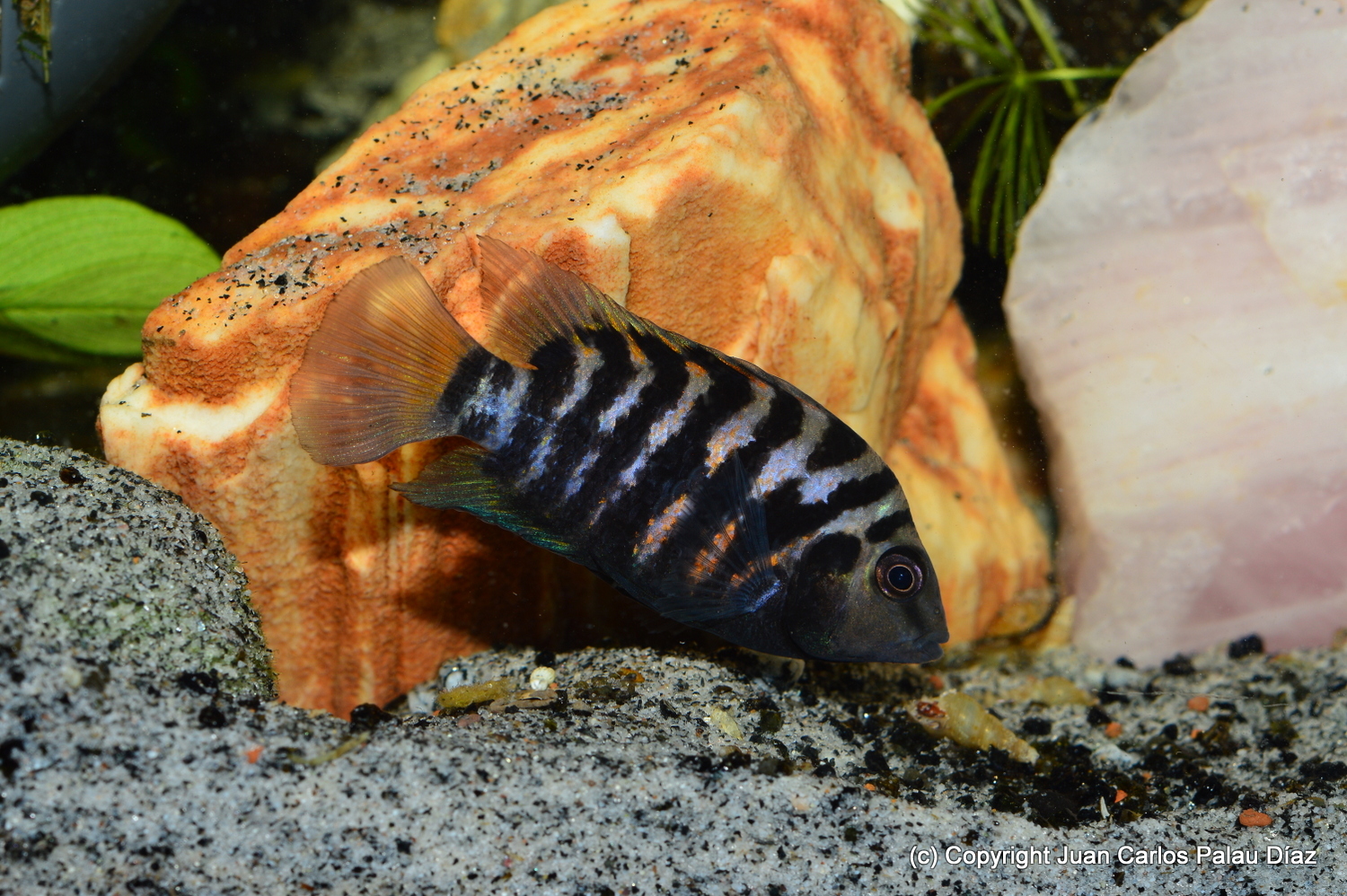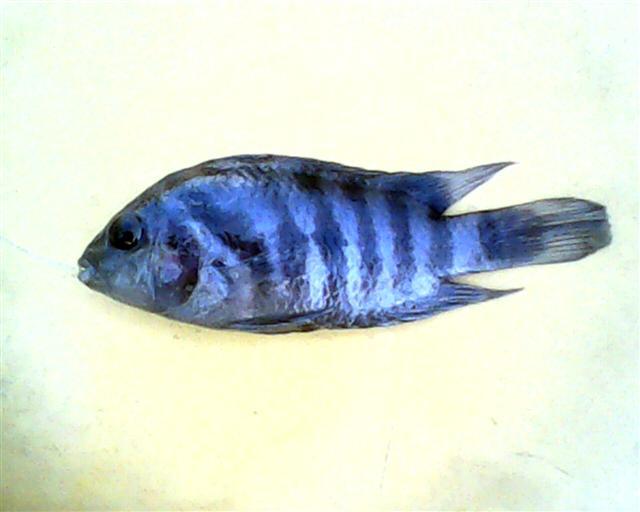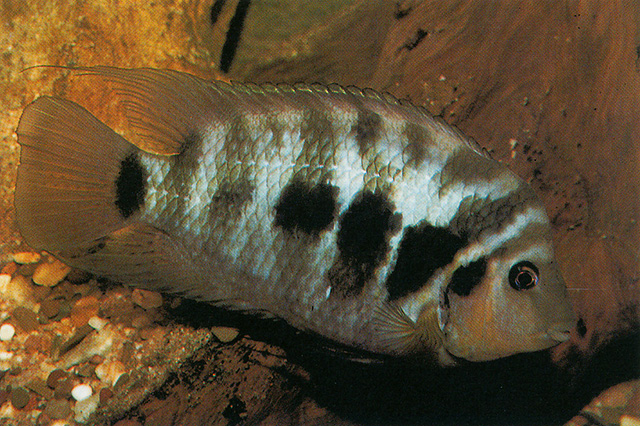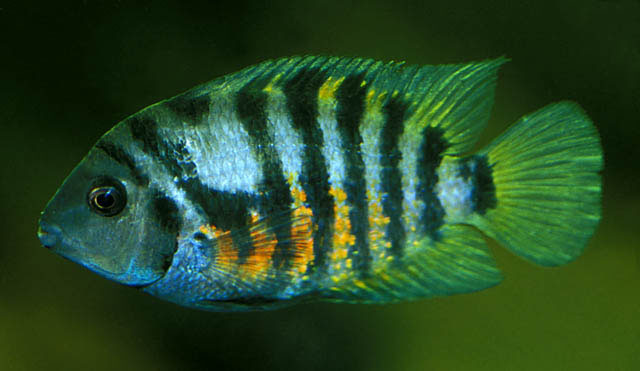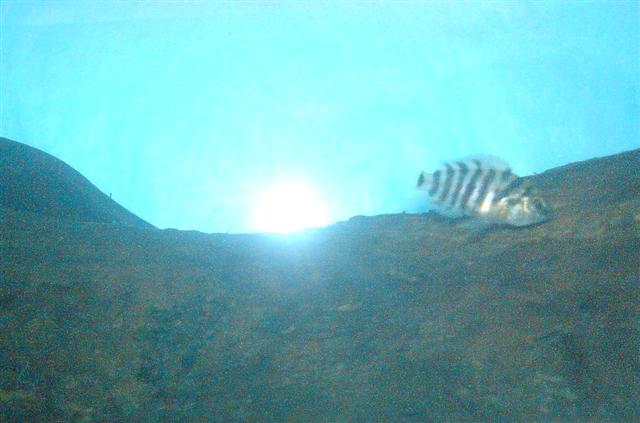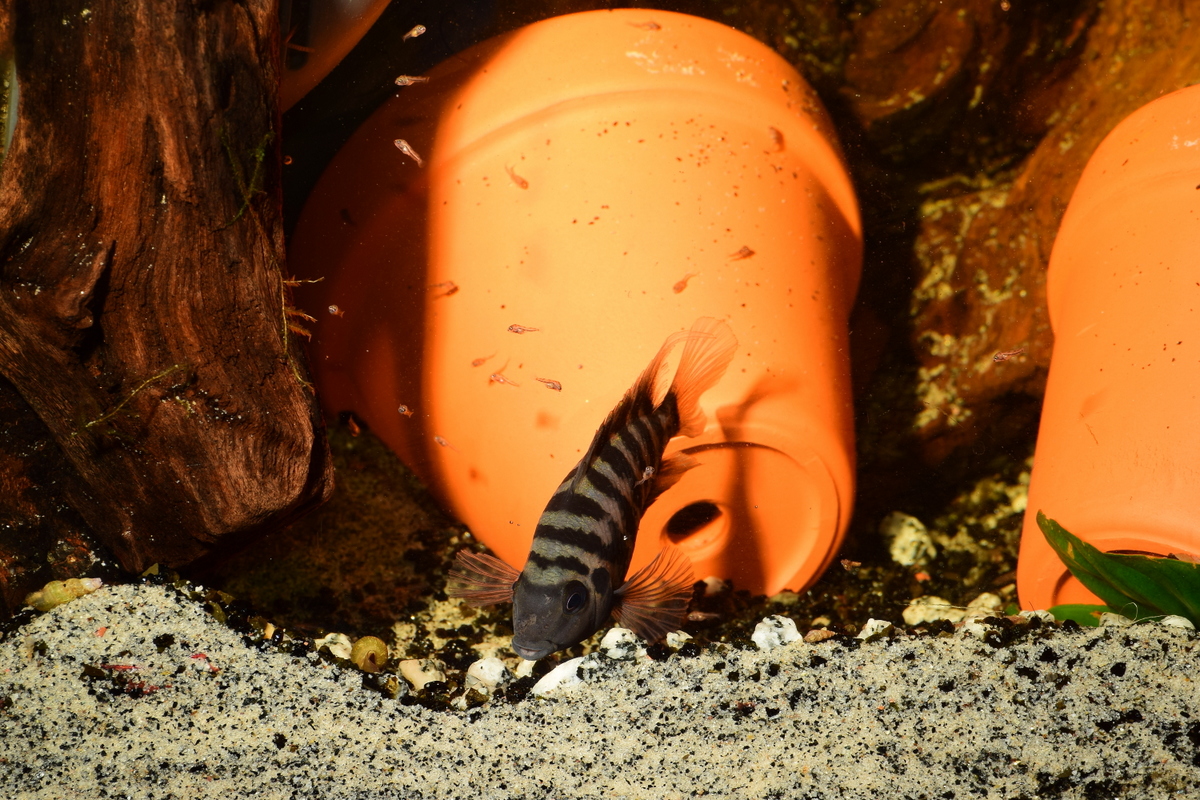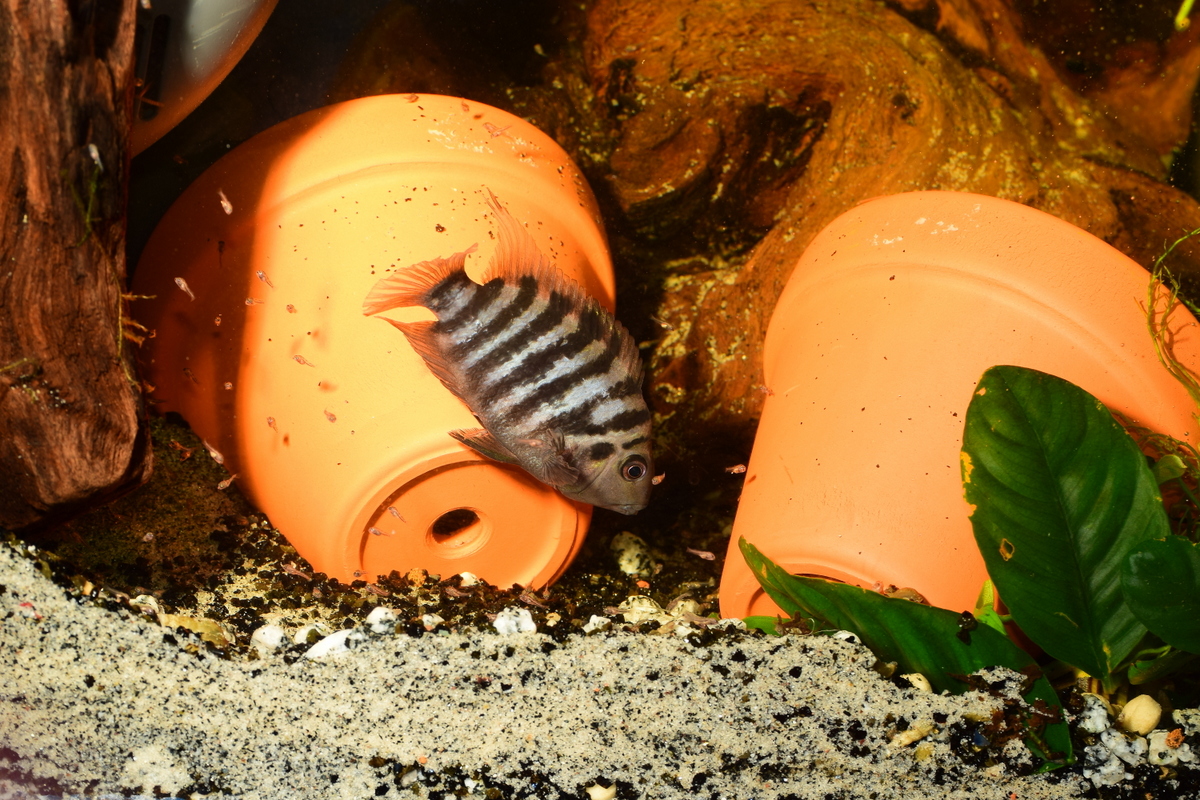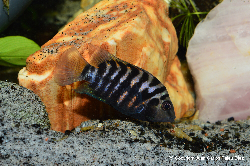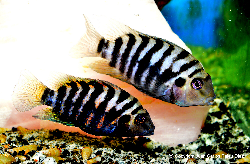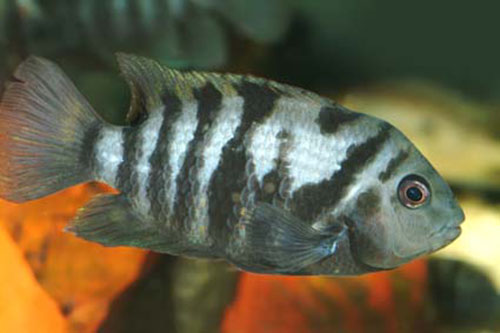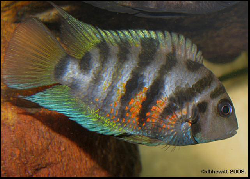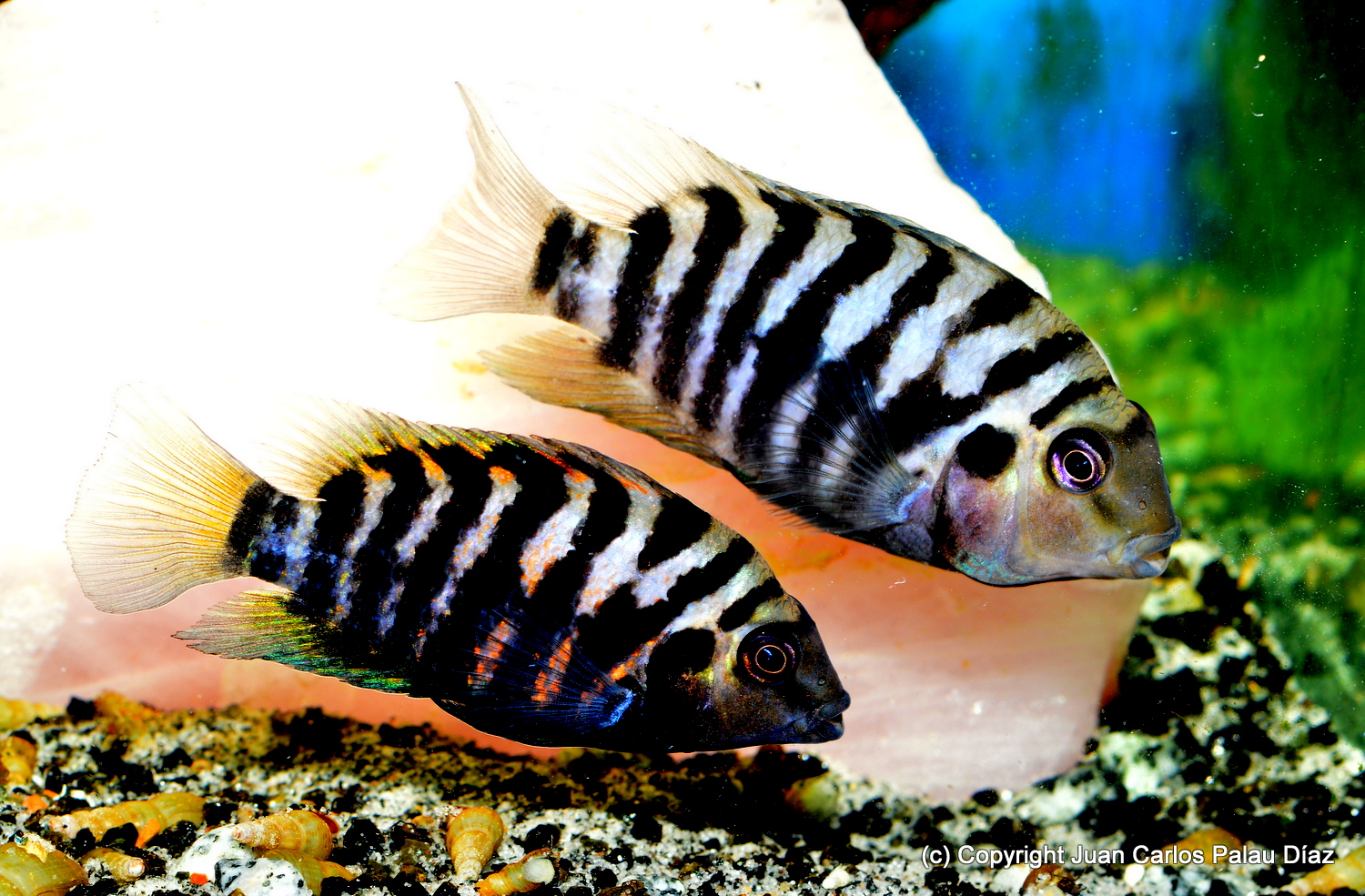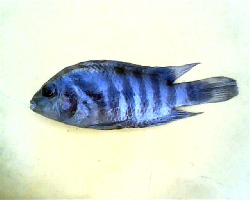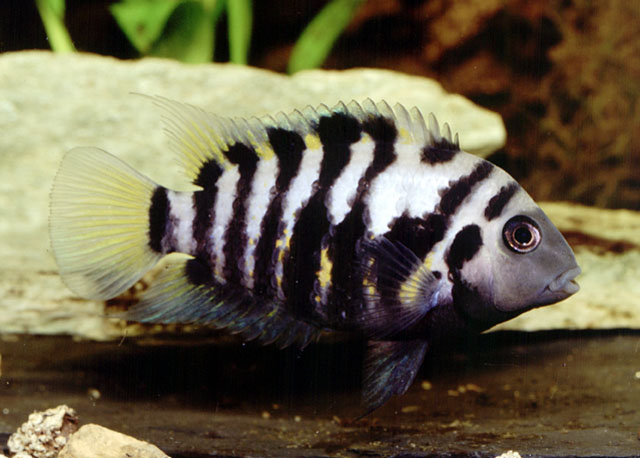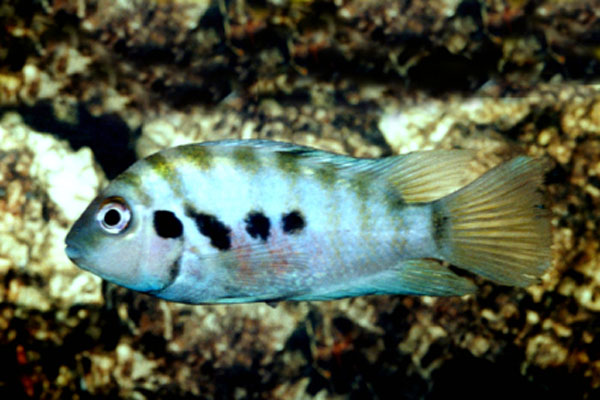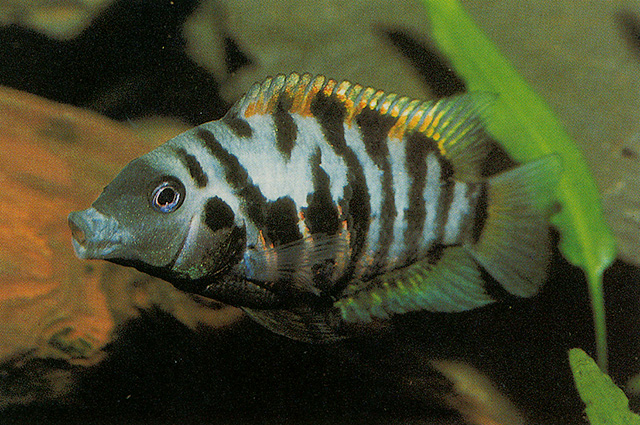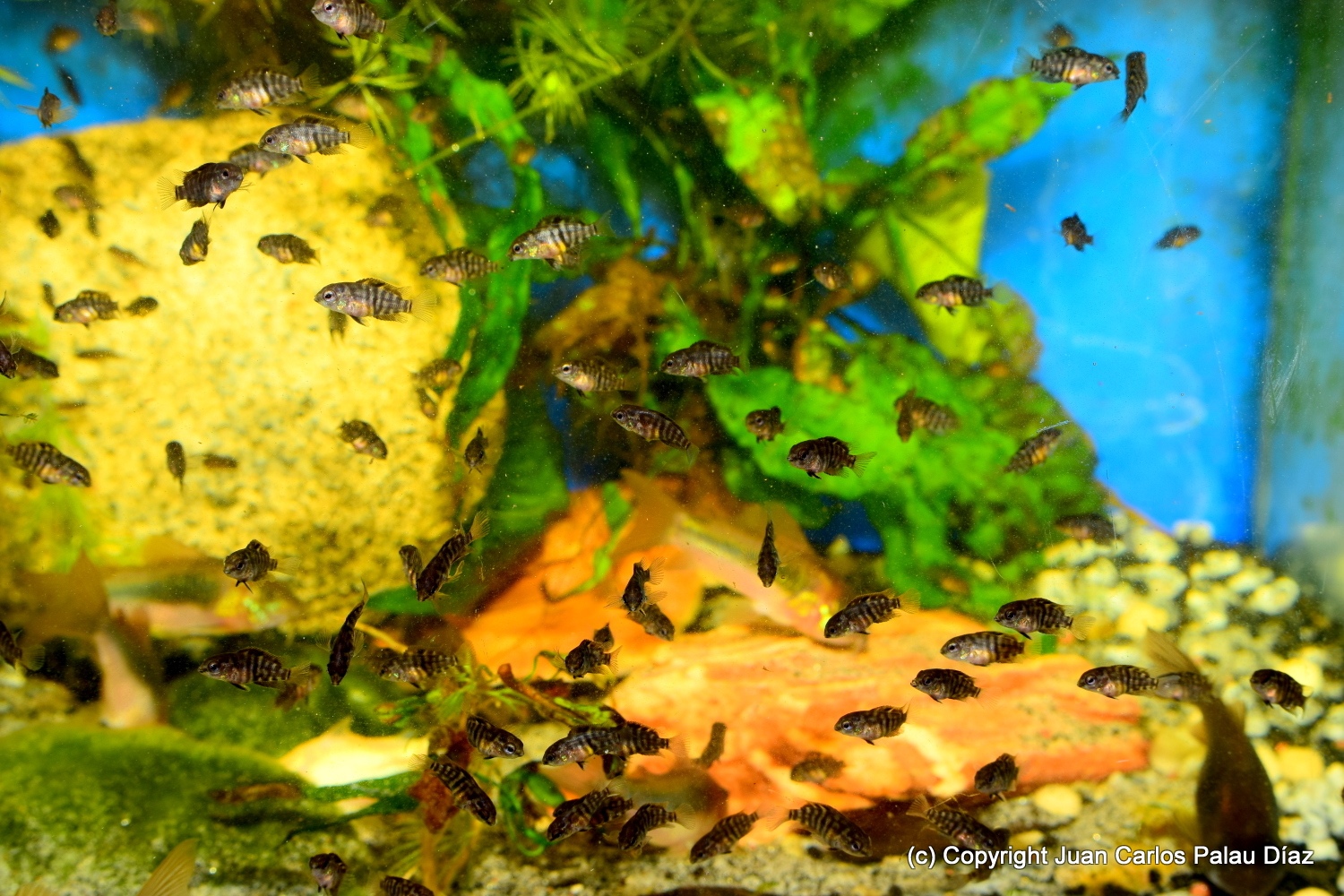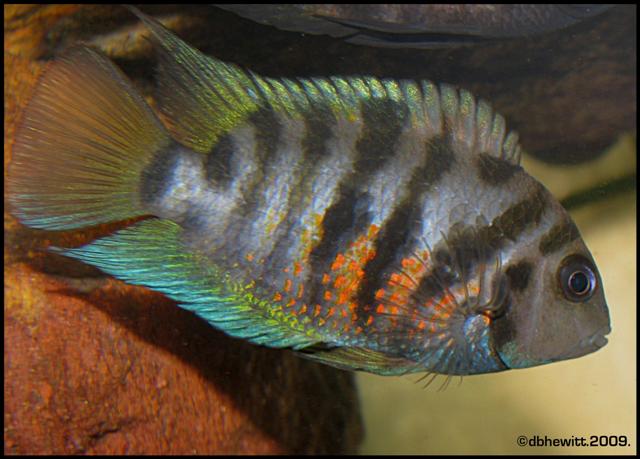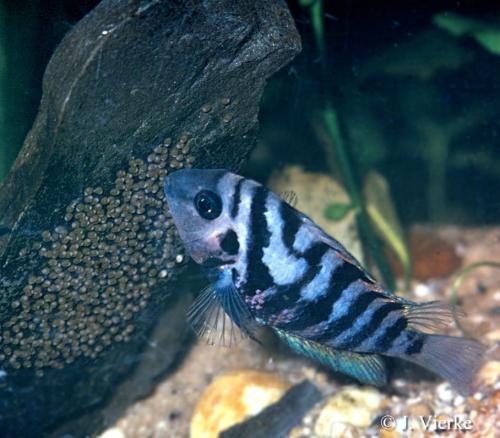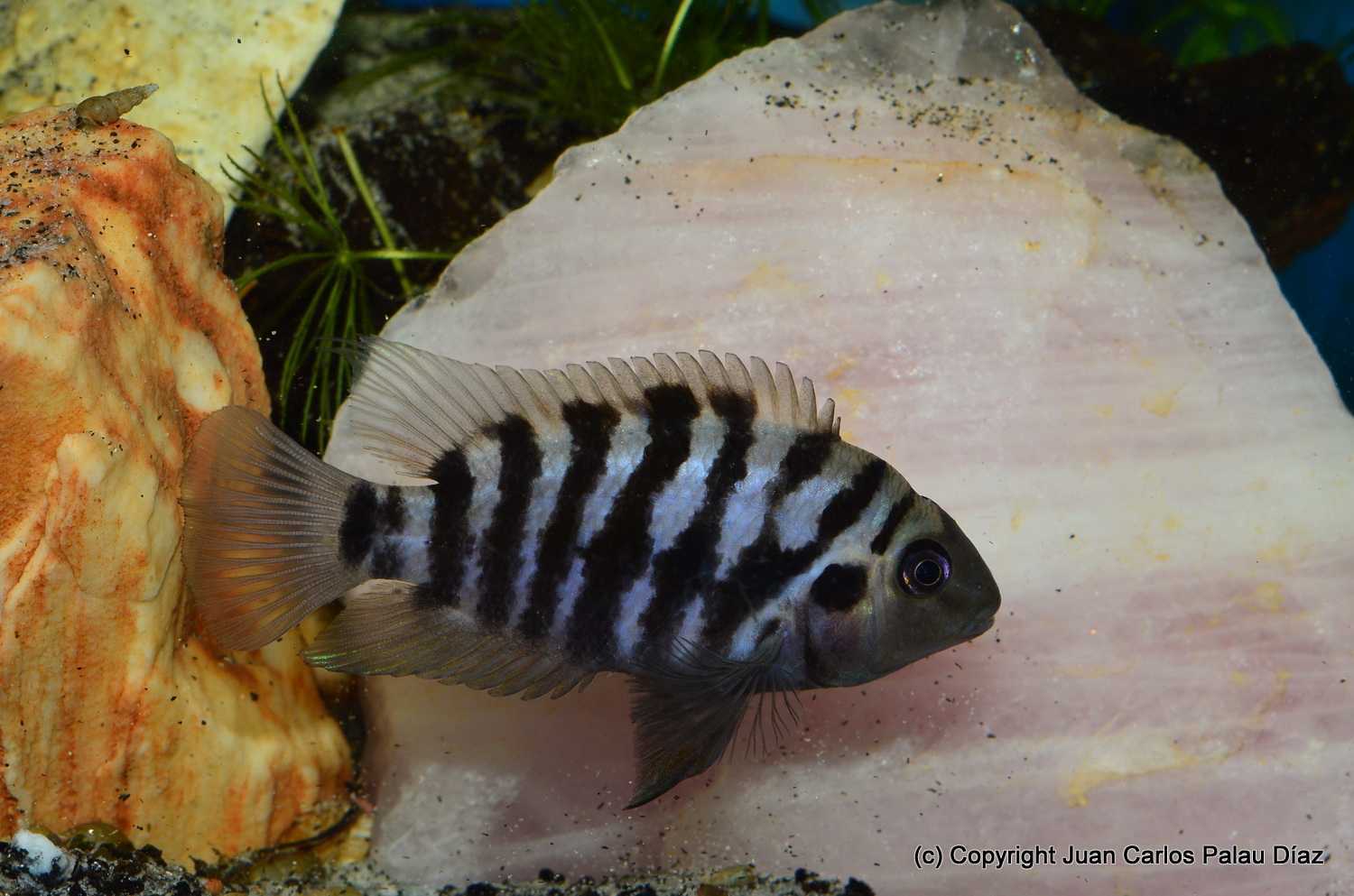Amatitlania nigrofasciata (Günther, 1867)
Description
Dorsal spines (total): 17 - 19; Dorsal soft rays (total): 7 - 9; Anal spines: 8 - 10; Anal soft rays: 6 - 7; Vertebrae: 27 - 28. This species is distinguished by the following characters: two (vs. one) distal rows of interradial scales on anal fin; arms in the first epibranchial bone are parallel (vs. divergent); posterior end of dentigerous arm of dentary rounded or squarish (vs. triple-spined or bluntly pointed); peritoneal coloration is uniformly dark (vs. not uniformly dark); rostrad directed pronounced convexity on the ventral process of the articular absent (vs. present); body less deep than as compared with its congeners kanna and siquia; 4th bar not Y-shaped (Ref. 74403).
Common Names
Taxonomic Hierarchy
Kingdom: Animalia
Phylum: Chordata
Class: Teleostei
Order: Cichliformes
Family: Cichlidae
Genus: Amatitlania
Species: Amatitlania nigrofasciata (Günther, 1867)
Climate Zone
Location
Biology
Adults inhabit flowing water from small creeks and streams to the shallows of large and fast flowing rivers (Ref. 7335). Prefer rocky habitats and finds sanctuary in the various cracks and crevices provided by this type of environment (Ref. 7335), or among roots and debris (Ref. 44091). They occur in warm pools of springs and their effluents (Ref. 7020). Feed on worms, crustaceans, insects, fish and plant matter (Refs. 7020; 44091). Also used in behavioral studies (Ref. 4537). Approximately 100-150 eggs are deposited and are vigorously guarded and cared for by both male and female (Ref. 44091). A popular aquarium fish which requires high temperature to maintain itself in an environment, e.g. artificially heated waters of power stations. Aquarium keeping: in pairs; minimum aquarium size 80 cm (Ref. 51539).
Habitat
benthopelagic
